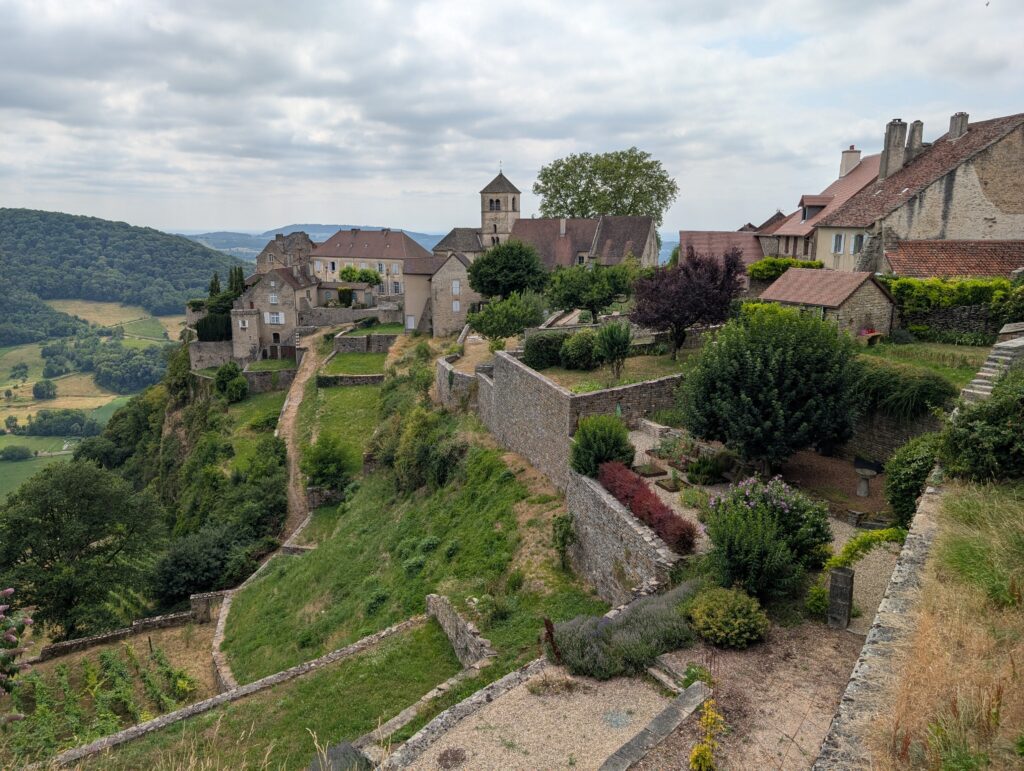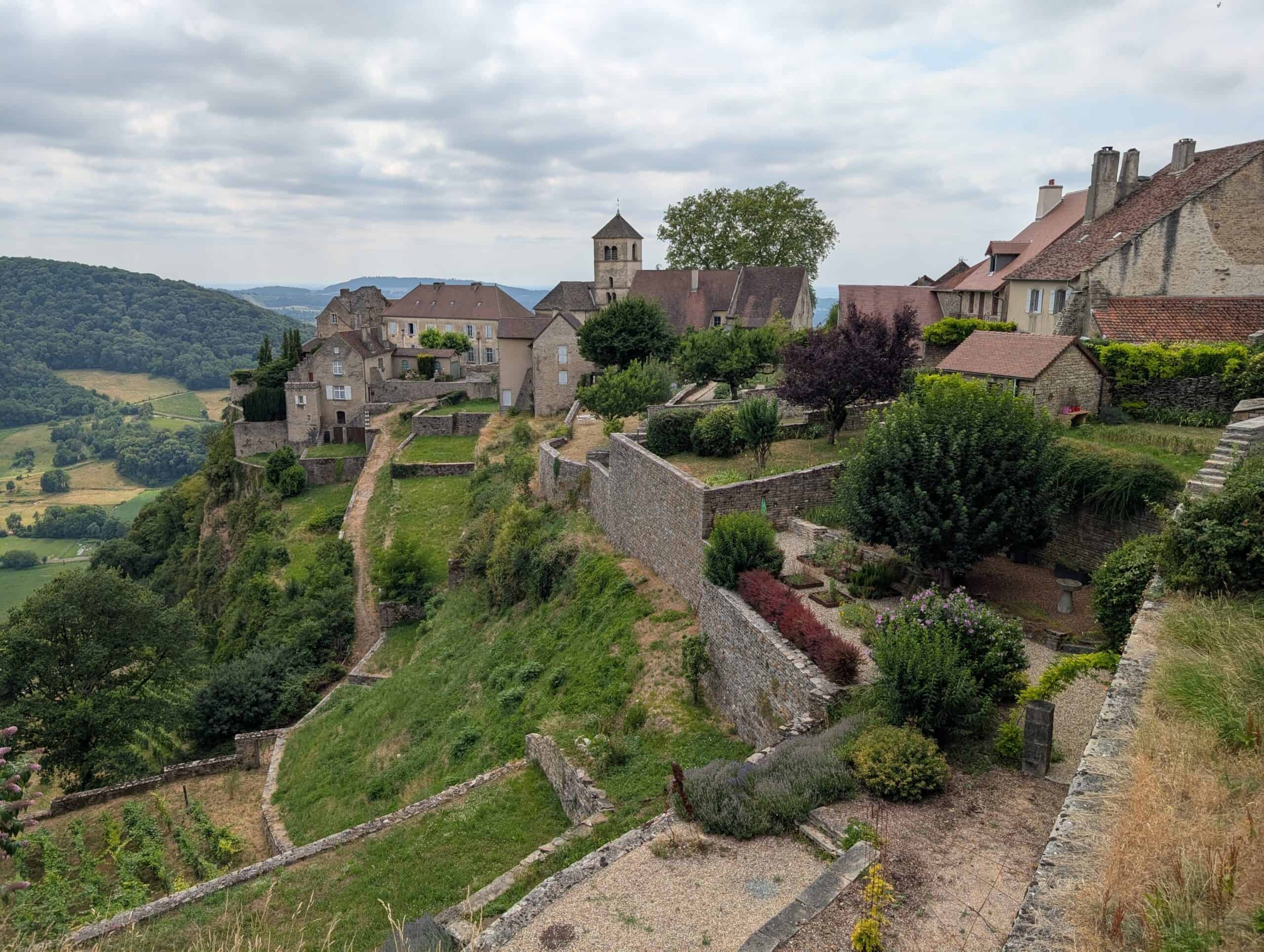Discover the Jura region, one of France’s best-kept secrets
Looking for a European escape that offers mountain scenery, rich traditions and a slower pace than Paris? The Jura region of France delivers all that, plus a fantastic cheesemaking tradition, at a fraction of the cost of neighboring Switzerland.

Why visit Jura
When people plan a trip to France, Paris usually gets all the attention. But if you head east toward the Swiss border, you’ll find Jura, a region packed with rolling hills, alpine forests and historic villages.
Jura feels like stepping into Switzerland without the sticker shock that often comes with Swiss hotels and restaurants. The region offers the same fresh mountain air, a sense of quiet and postcard-worthy views, with French flair and affordability.
How to get there
The easiest airport to reach Jura is Geneva in Switzerland. From Geneva, you can pick up a rental car and be in the heart of the tiny cheese region in about two hours.
While trains do run through parts of the region, you need a car if you want to explore the smaller villages, visit dairies or follow scenic backroads that lead to lakes, vineyards and castles. Driving here is relaxed compared to big cities, and it gives you the flexibility to stop whenever something catches your eye.
Jura is approximately two hours from Lyon and four to five hours from Paris. You can fly into either airport, which gives you a chance to experience different regions of France that give you a wider variety for your trip.
Learn About Comté cheese
No trip to Jura would be complete without sampling its most famous export, Comté cheese. Made from raw cow’s milk in traditional dairies, Comté is nutty, complex and aged anywhere from a few months to several years.
Plan a visit to Maison du Comté in Poligny to learn why this cheese is important to the region. This engaging, hands-on museum includes exhibits that walk you through the history, production and tasting notes of this beloved cheese.
For a different perspective, visit Fort des Rousses, a massive former military fort that now houses thousands of wheels of Comté maturing in underground cellars. You’ll never forget the sight of endless rows of golden cheese wheels quietly aging, or how the master cheese makers care for the cheese.
If you have time, visit a working dairy farm such as Chalets des Chemins Verts, where you can see how the milk is produced and even meet the Montbéliard cows that provide it. From there, stop by a local fruitiere, the cooperative dairies that turn fresh milk into wheels of cheese within 24 hours of milking. Watching the transformation happen so quickly adds a whole new level of appreciation to every bite you taste.
Wine culture in Jura
Jura wines may not be as famous as Bordeaux or Burgundy, but they are some of the most distinctive in France. Along with vin jaune, you’ll find vin de paille, a sweet dessert wine made from grapes dried on straw mats, and light reds perfect for pairing with Comté.
The region’s small size means tastings are intimate and personal, often led by winemakers themselves. A day spent touring wineries here feels less like a commercial production and more like being welcomed into a family tradition.
Towns worth exploring
Part of Jura’s charm lies in its small towns, each with its own character. They have different vibes, but they all have history and locations worth visiting.
Poligny is known as the capital of Comté cheese, where you can enjoy tours, tastings and a cozy atmosphere. Stroll through its cobbled streets, explore historic buildings and enjoy the relaxed pace.
In Arbois, you’ve found a hub for wine lovers. It’s famous for vin jaune, a golden yellow wine aged for six years before bottling. Many small wineries here open their doors for tastings, giving you the chance to try varieties you won’t find outside the region. The town itself is colorful and walkable, with charming shops and cafes.
Surrounded by forests and rivers, Champagnole makes a good base for outdoor activities such as hiking, kayaking or exploring caves. It’s less touristy and offers a true glimpse of everyday life in Jura.
You’ll find Château-Chalon perched on a cliff. This medieval village is one of the most picturesque in the region, with narrow streets, stone houses and panoramic views of vineyards. It is also one of the birthplaces of vin jaune, so add wine tasting to your list.
Outdoor adventures in every season
Outside cheese and wine, Jura is made for nature lovers. In summer, hiking trails lead through forests, past waterfalls and up to mountain ridges with sweeping views of the Alps in the distance. Lakes like Lac de Chalain are perfect for swimming or boating.
In winter, Jura transforms into a playground for cross-country skiing and snowshoeing. The region has hosted international Nordic competitions, so the trails are top-notch but still accessible for beginners. They also have fantastic downhill skiing throughout the mountainous area, suitable for both beginners and expert skiers.
Jura’s slower pace feels like a true escape
One of the best parts about Jura is its slower way of life. You won’t find the crowds of Paris or the polished tourist infrastructure of Switzerland. Instead, there’s a welcoming authenticity.
People here take pride in their traditions, whether it’s cheesemaking, winemaking or preserving centuries-old architecture. Traveling through Jura feels like stepping into a storybook where time stretches a little longer and experiences linger.
A long weekend gives you enough time to see the highlights, but a week lets you dive deeper into village life, taste more wines and explore hidden valleys. Accommodations range from simple guesthouses to charming inns, often at a fraction of Swiss prices. If food is high on your list, consider timing your visit with one of Jura’s seasonal festivals that celebrate cheese, wine or local crafts.
Michelle Price is a food and travel writer at Honest and Truly Travels who almost has an empty nest. She loves to provide both the inspiration and the confidence you need to help get you on the road to enjoying new flavors and experiences.


